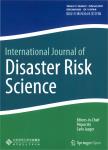An Analysis of Social Vulnerability to Natural Hazards in Nepal Using a Modified Social Vulnerability Index
An Analysis of Social Vulnerability to Natural Hazards in Nepal Using a Modified Social Vulnerability Index作者机构:Department of Geography Virginia Tech Virginia Water Resources Research Center Virginia Tech Urban Affairs and Planning Virginia Tech
出 版 物:《International Journal of Disaster Risk Science》 (国际灾害风险科学学报(英文版))
年 卷 期:2019年第10卷第1期
页 面:103-116页
核心收录:
学科分类:0709[理学-地质学] 08[工学] 0303[法学-社会学] 0832[工学-食品科学与工程(可授工学、农学学位)] 083002[工学-环境工程] 0830[工学-环境科学与工程(可授工学、理学、农学学位)] 1201[管理学-管理科学与工程(可授管理学、工学学位)] 0708[理学-地球物理学] 0705[理学-地理学] 0837[工学-安全科学与工程] 0706[理学-大气科学] 0813[工学-建筑学] 0704[理学-天文学] 0833[工学-城乡规划学]
主 题:Disaster risk reduction Natural hazards Nepal Principal component analysis Social Vulnerability Index
摘 要:Social vulnerability influences the ability to prepare for, respond to, and recover from disasters. The identification of vulnerable populations and factors that contribute to their vulnerability are crucial for effective disaster risk reduction. Nepal exhibits multihazard risk and has experienced socioeconomic and political upheaval in recent decades, further increasing susceptibility to hazards.However, we still know little regarding social vulnerability in Nepal. Here, we investigate social vulnerability in Nepal by adapting Social Vulnerability Index(SoVI) methods to the Nepali context. Variables such as caste, and populations who cannot speak/understand Nepali were added to reflect the essence of the Nepali context. Using principal component analysis, 39 variables were reduced to seven factors that explained 63.02% of variance in the data.Factor scores were summarized to calculate final SoVI scores. The highest levels of social vulnerability are concentrated in the central and western Mountain, western Hill, and central and eastern Tarai regions of Nepal, while the least vulnerable areas are in the central and eastern Hill regions. These findings, supplemented with smaller-scale analyses, have the potential to assist village officers, policymakers,and emergency managers in the development of more effective and geographically targeted disaster management programs.



